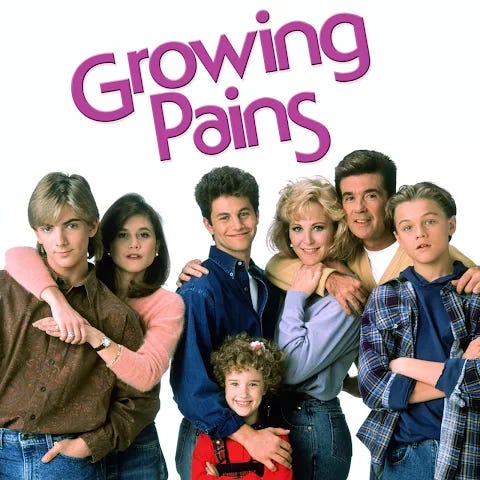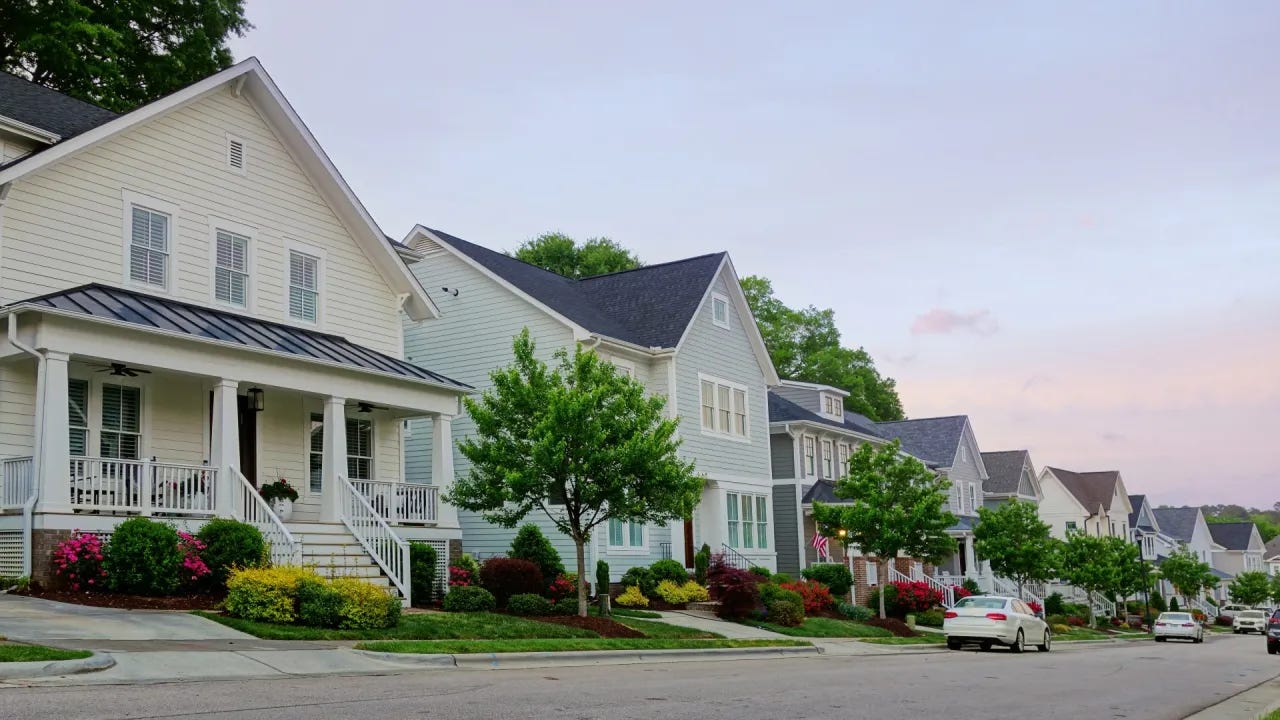My father was a therapist and professor. For those of you Boomers, Gen Xers, and older Millennials you might remember a television show that started in 1985 and ran for 7 seasons called Growing Pains. Actors on the show included Joann Kerns, Kirk Cameron, Leonardo DiCaprio, Alan Thicke and Tracey Gold.
In the show, the dad, Dr. Jason Sever, was a therapist who saw clients in a home office. Although this is a rare set up these days, it was more common in the earlier days of the field. My dad was one of these professionals who had his office in our home. His office was always a distinct and separated part of the house with its own entrance. In some ways, my dad was always home even if he wasn’t always accessible. It was a unique experience to grow up instinctually averting your eyes when you came home and noticed people you didn't know leaving your home.
I did not go into his office often, but when I did I cautiously looked around at the various artifacts. I still remember the smell of his leather couch mixed with his cologne. The statue of a man and woman (one of my dad’s expertise was working with couples). The magazines neatly laid out in the waiting room. The books on strange topics for a small girl.
Some books were for kids. My dad worked with families and sometimes had items around that were for younger people. I remember one book grabbing my attention. It was on types of friendships.
I don’t know why that book became lodged in my memory. I still remember the sketches of little kids illustrating the ideas on each page. It went through categories of friendships, which I had never considered. A friend is a friend is a friend, I thought. But this book was teaching me that we could have different types of friends. Acquaintances, playmates, best friends…it plainly explained the differences and value of each type.
Something about this framework intrigued me. It taught me that there is value in different types of relationships. Not all friendships have to be the same. I started learning that we need different types of connections in our lives.
Fast forward to graduate school. I was in my mid-twenties, working on my second graduate degree, a Masters of Arts in Marriage, Family and Child Counseling at Fresno Pacific University in California. In one of our classes, a required text was The Search to Belong by Joseph R. Myers. In a critique of Evangelical culture, which tends to push people into intimate spaces as a sign of spiritual growth and commitment, this book offered a different perspective that was strikingly similar to that book in my dad’s office so many years prior.
This idea is that there are four types of spaces for relationships: Public, Social, Personal and Intimate. To help us talk through these spaces, I am going to use the picture Myers uses in his book: a house with a front porch.
The sidewalk in the front of the house represents “Public Space” relationships. Think: the checkout clerk at the grocery story. The teller at the bank. The neighbor you wave to from the sidewalk as you take your dog out for a stroll. You may not even know their name, but these are interactions that you have daily. These connections punctuate your life with waves and smiles and chit chat. You have countless public space connections.
The front porch of the house represents “Social Space” relationships. Think: the person you see at church every week. A parent of another child on your daughter’s soccer team. The woman who shows up every week for your running group. Your teacher or coach of your fitness class. The men or women who attend your regular game or craft night.
The living room of the house represents “Personal Space” relationships. Think: your close group of friends you take an annual girls weekend with. Your colleague from work who has turned into a dear friend over years of weekly lunches together. Your best friend from college you still talk to on a regular basis.
The bedroom of the house represents “Intimate Space” relationships. Think: your partner or spouse. Your lifelong, very best friend. Typically, we only have one…maybe two…people in this space.
Social spaces sometimes are referred to as “Third Places”. This is a place outside of home and work (or school) where you can gather and connect with others in a relaxed, no pressure, way. The front porch offers a “third place” because it isn’t all the way into someone’s home, but it is a place where you can offer a glass of water, lemonade, or tea and visit for a little while. It is a place where someone can “drop by”, connect and then go about their day. A concern cited about American culture is that we have seen a slow death of “Third Places”. A physical manifestation of this dynamic is through observation of home architecture: There are fewer front porches. Faith communities and their buildings offer a Third Space. So do public libraries.
We learned a lot about our need for public and social spaces during the COVID quarantine. I remember going out for the first time in a while and seeing a teacher of one of my children while I was out. It felt so good to just say hi! He wasn’t my best friend or someone I talked to on a regular basis. I would put him in my “Public Space”.
Not too long ago, I went to the grocery store and, as I was checking out, struck up a conversation with the clerk and the worker bagging my groceries. I’m not one who frequently chats it up as I am paying, and most clerks seem fine with just moving through the line to the next person. However, on this day something I was buying sparked a conversation. I do not remember what we talked about, but I DO remember how I felt leaving. The short, maybe 2-minute experience left me feeling refreshed, alive, and lighter. I smiled as I left, grateful for other delightful human beings.
I’ve written and taught about this idea many times. Adult relationships can be challenging to build and tricky to navigate. In grade school we have ready-made friends because we all run out onto the playground side by side. We show up together in the same space over and over. That is key for relationship building: showing up in the same space, side by side, over and over again. In college we walk out onto the courtyard and into what can feel like a ready-made party. We are all in the same boat: trying to get through classes, work towards having a job that will support us, and having fun at the same time.
Mid-twenties can bring a shock to young people. The quarter life crisis often involves loneliness and the painful realization that finding adult friends is DAMN HARD sometimes. WHY IS IT SO HARD?
There is no playground to where we are all running side by side. No courtyard in which to congregate.
Finding, cultivating, and committing to Third Spaces where we can foster connections takes work, effort, and the willingness to take risks. We must show up and be the new person. We must walk up to people and introduce ourselves, even when they look intimidating and maybe one person in the group is giving us the side eye.
Basically, as adults we are all still middle schoolers trying to belong and find our place where we fit. Insecure, judgy, and eager to find our people.
Relationships CAN move from space to space. AND, it is ok if they don’t. Enjoy what the relationship is for you during the time that you have it. Keep showing up…even when it is uncomfortable and imperfect. These days if you are in a small town or large city you can find gatherings through meetup and your local library. Or, start your own!
But don’t force intimacy. Don’t force vulnerability. Don’t force relationships to be all (personal/intimate) or nothing. Learn to cultivate and allow for social and public space connections. Those relationships do MATTER. They are giving you more life than you realize.
If you want to see more thoughts and videos from me you can also visit:
https://www.instagram.com/dremilystone/
https://www.tiktok.com/@dremilystone
Postscript: In the readable version of this post on Substack you will find helpful links throughout the transcript of what is heard on the audio podcast version. The podcast and Substack is called Letters from a Therapist.
That’s what I have to say today. I am guessing you have something to say, too. Happy to hear it.
If you enjoyed listening today, please consider liking this post wherever you read it or listen to it, subscribing to my Substack and sharing it with someone you think might enjoy it, too. The subscription is free and it would mean so much to me. Thank you!














Share this post